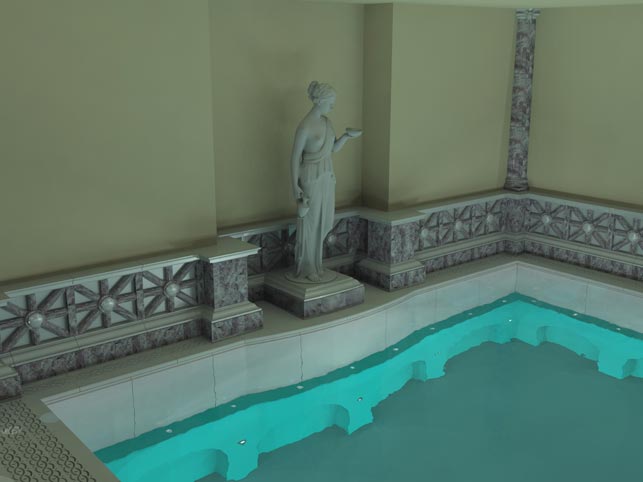Some of the greatest creations built in Britain have emerged from the humble garden shed, yet in recent years the ‘home office’ has gained kudos amongst a wide range of professionals.
There’s not an oily rag, packet of seed, or lawnmower present in the ‘home office’ of In-CAD Services’ founder Adrian Curtis, but there is a great deal of pride, knowledge and engineering skill that comes out of it.
As the sole entity in In-CAD’s workforce, Adrian is to be found working in his cabin at the bottom of his garden behind a three-monitor workdesk, with two workstations humming quietly away, an A2 printer and large format plotter resting at the back, now hemmed in neatly by an Objet 250 3D printer.
Single person firms tend to be specialist operations with the skills to provide a small, but important role. However, the company still manages undertake a huge breadth of projects, which it often follows through every stage of the product development process from concept to manufacture, and all of this is down to the experience and know-how of Adrian.
“I try to engineer as opposed to design,” he says in his affable West Country tones. “I’ll take on any project that’s mechanical, from special purpose machining to vacuum moulding.
“I sell my services to anyone who wants to design any type of component whether it be in metal, plastic, or mechanical,” adds Adrian of his company that is now over ten years old, and is advancing further with the introduction of its rapid prototyping service.

This large pool and spa for a palatial London terraced house, is over engineered and designed with a design requirement being that the water can be heated within a minute
With a background in the tooling shop he takes customer designs into the realms of engineering to get the best from production, function and, importantly, cost. “Knowing how to use the machines in the machine shop – the CNCs, the lathes – when you’re a tool maker, or a mould maker, you have to be able to use every machine to make the mould.
“It gave me the ability to adapt pretty much any type of special machinery to how the part was going to be made.”
Away from the traditional tooling, InCAD, as the title may suggest, is clinically up to date in all aspects of computer aided design and engineering, boasting the latest range of Autodesk software fresh from their 2010 wrappers.
I’ve looked into expanding and taking on graduates, but find that they don’t have the experience to handle all the tasks that In-CAD covers
A long-term Autodesk customer (Adrian was one of the first people in the country to use its software) he has been working with Inventor 2010 since the beta release and has found the new mould design tools particularly useful.
“I do Moldflow analysis when I design the product and incorporate all the areas, so that when it’s finished it will be tooled easily,” he says. “If there are any areas that are a bit iffy, because it is within Inventor it is so quick to run the analysis.”
The majority of Adrian’s work revolves around a strange balance between luxury and essential. His current project, the construction of a large pool, spa and its surroundings two storeys below street level in a palatial London terraced house, is dripping in excess wealth and is wildly beyond the norm. “The spa is massively over engineered and designed, the client wants the water to heat within a minute hence the extra pipes to change all the water,” explains Adrian.

Adrian at home in his design office (shed)
Even the marble flooring comes under scrutiny in the CAD model as Adrian has to compensate for waterproof layers between the base concrete and plush Italian marble surfaces, drainage from the spa’s ‘infinity pool’ ledge, and how to fit in all the pipes.
More essential piping is displayed when Adrian shares details of a previous project, a wastewater filtration system for the armed forces. Built into an ISO shipping container it was originally built for military use in Kosovo, and further redesigned for engagements in Iraq. A similar unit is now in use by the oil drilling-exploration industry in Oman (“Waste water goes in, drinking water comes out the other end”) where it is vital for human survival.
Adding 3D printing to his technology portfolio has been a significant move for Adrian, enabling him to make components to communicate more effectively to those involved both in design and manufacture. “I find this very useful for clients because there are still a lot of people out there who you can show an image on the screen in 3D that they can’t grasp,” he says.
Bringing the technology in-house has also saved him money. “The year before this I spent £8,000 on rapid prototyping [models]. That was the indicator to spend that money on the Objet 250.”
A small printer it may be, but even with continual investment in new technologies In-CAD Services should lose none of its garden shed charm as Adrian wants to maintain the personal and proficient service. “It’s more efficient for the way I work. I’ve looked into expanding and taking on graduates, but find that they don’t have the experience to handle all the tasks that In-CAD covers. As a result where I work is the most efficient for what I do. I love working where I do, and spend too much time there!”

3D printing makes a big difference to small firm In-CAD






